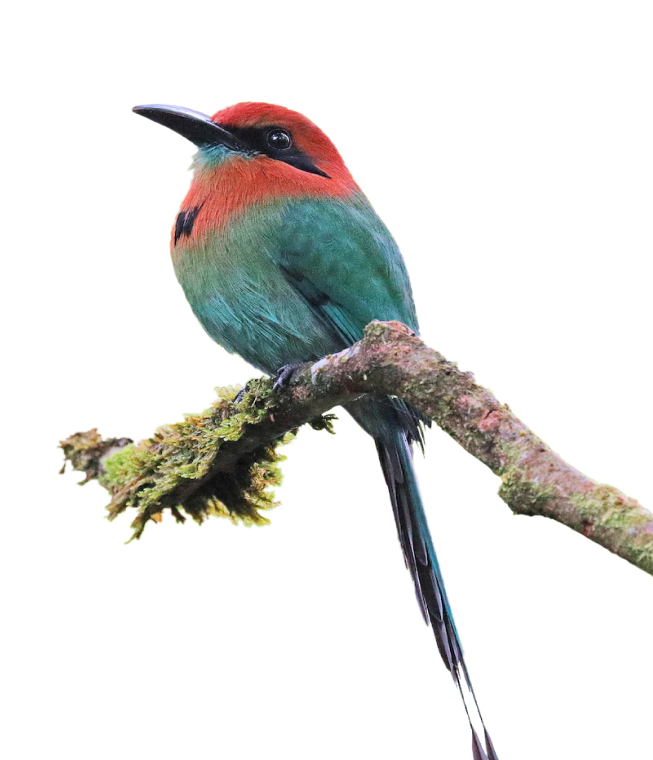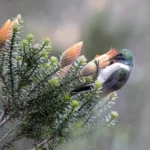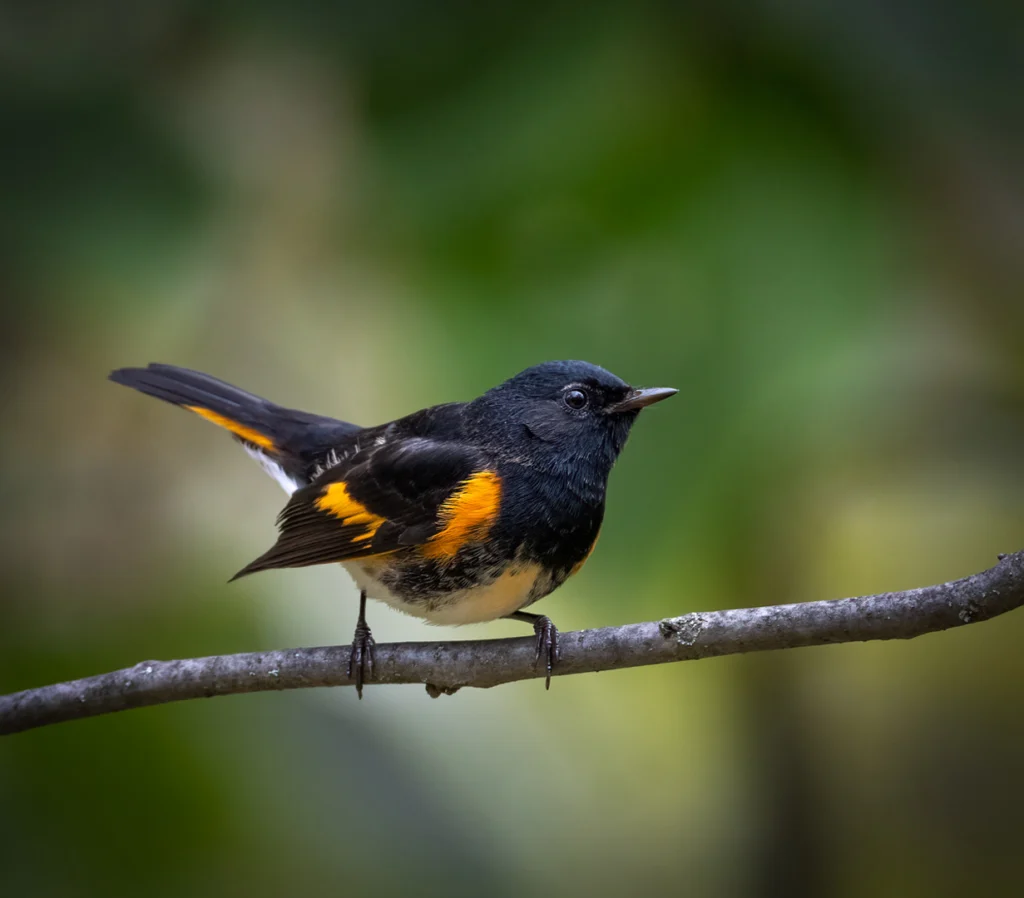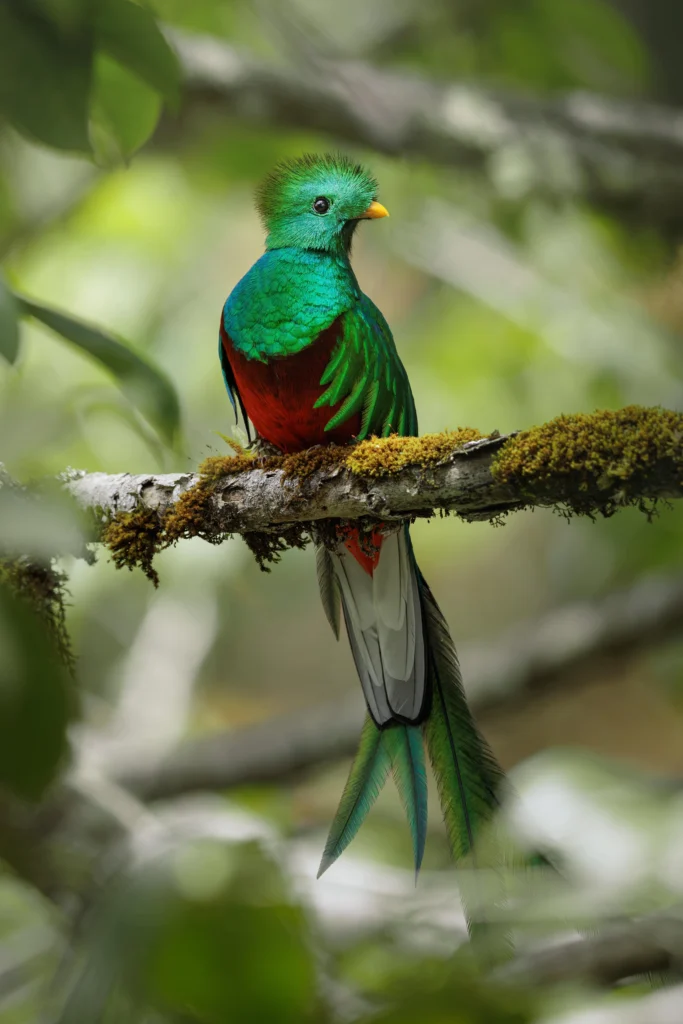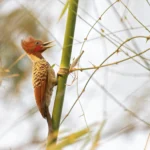
Overview
About
Considered sacred by several Mesoamerican civilizations, the Resplendent Quetzal remains culturally significant to this day. The Resplendent Quetzal likely inspired Quetzalcoatl, the “plumed serpent” god of Mesoamerica. Legend has it that Quetzalcoatl helped create Earth. Rulers and nobility wore headdresses made from this quetzal’s shining green feathers, which symbolically connected them to the god.
In some Mesoamerican cultures, it was considered a crime to kill a quetzal, so the plumes were procured by capturing the bird, plucking its long tail feathers, and setting it free. In several Mesoamerican languages, the term for quetzal can also mean “precious” or “sacred.”
These iridescent green tail feathers also symbolized spring plant growth to the Aztecs and Maya, who viewed the quetzal as the “god of the air” and as a symbol of goodness and light. The Maya also viewed the quetzal as a symbol of freedom (due to the difficulty of keeping them in captivity) and wealth and status, as its feathers were used as money. Even today, the currency of Guatemala is called the quetzal.
The Resplendent Quetzal is also the national bird of Guatemala, pictured on the country’s flag and coat of arms. It was thought to be the spirit guide of a Maya ruler and hero, Tecún Umán, who fought against the Spanish conquest. According to legend, Tecún Umán was killed as he fought the conquistador Pedro de Alvarado. As Tecún Umán lay dying, a quetzal flew down and landed on his chest, dipping its feathers in the hero’s blood. This is supposedly how the bird acquired its red breast and belly feathers.
This spectacular species belongs to the trogon family, a group of colorful, fruit-eating birds found in the Americas, Asia, and Africa. Other family members found in the Americas include the Golden-headed Quetzal, the Elegant Trogon, and Haiti’s national bird, the Hispaniolan Trogon.
Threats
Birds around the world are declining, and many of them, like the Resplendent Quetzal, are facing ever-increasing threats. Partners in Flight includes the Resplendent Quetzal on its Red Watch List as a species of high conservation concern, and also classifies it as a “Tipping Point” species — one that has lost more than 50 percent of its population within the past 50 years.
Habitat Loss
The biggest threat to the Resplendent Quetzal is the destruction of its cloud forest habitats. These essential habitats are increasingly fragmented and destroyed by logging and deforestation for agriculture and livestock production.
Climate Change
Climate change can alter rainfall patterns, affecting the availability of suitable quetzal breeding habitat. In addition, a changing climate can affect the fruiting patterns of trees important to the quetzal, leading to critical food shortages.
Illegal Hunting/Trade
Resplendent Quetzals were collected in huge numbers throughout history by Europeans, who sold the birds’ skins to collectors and museums. Today, though at a decreasing level, the species may still be hunted for food or for their long, colorful feathers, which are used for ornamental and traditional purposes. It is sometimes still trapped for the cage bird trade, although this species does poorly in captivity.
Conservation Strategies & Projects
Birds need our help to overcome the threats they face. At ABC, we’re inspired by the wonder of birds and driven by our responsibility to find solutions to meet their greatest challenges. With science as our foundation, and with inclusion and partnership at the heart of all we do, we take bold action for birds across the Americas.
Supporting Partnerships
ABC and our partners protect essential migratory bird habitats through the BirdScapes program, which also benefits resident bird species. In Nicaragua, the Bosawas BirdScape protects important habitat for the Resplendent Quetzal as well as priority migratory species such as the Golden-winged Warbler.
Addressing Climate Change
Along with our partners, we have planted millions of native trees and shrubs in 15 countries to help restore important bird habitats. These efforts also protect watersheds and sequester carbon to mitigate the effects of climate change.
Creating & Maintaining Reserves
ABC is continuing to create new reserves and expand existing reserves to conserve all unprotected endangered bird species in the Americas, including the Resplendent Quetzal. We work with local communities and organizations to plan reserves and support infrastructure for sustainable tourism.
Bird Gallery
The male Resplendent Quetzal is an unforgettable sight, shimmering with metallic greens and blues above and bright red below, and sporting a bristly-looking crest of golden-green feathers. During the breeding season, the male’s upper tail feathers grow into a flowing green train that can reach up to 3 feet long. The female is less showy, with iridescent golden-green upperparts, grayish-green head and chest, gray sides and belly, and red undertail feathers. Both sexes have gray and black striped tails. The rather small bill is yellow (male) or gray-black (female). Juveniles resemble females.
The Resplendent Quetzal’s shining green feathers blend beautifully into the dense foliage of the cloud forest, providing effective camouflage.

Sounds
The song of the Resplendent Quetzal is a series of plaintive-sounding notes: keow, kowee, keow. Calls include a sharp, cackling perwicka, heard in flight or when the bird is agitated. Other calls include soft, repeated hoots and whistles.
Manuel Grosselet, XC914118. Accessible at www.xeno-canto.org/914118
Andrew Spencer, XC31815. Accessible at www.xeno-canto.org/31815
Beatrix Saadi-Varchmin, XC326653. Accessible at www.xeno-canto.org/326653
Habitat
The Resplendent Quetzal lives high in the forest canopy and subcanopy, rarely descending to the ground.
- Prefers mature, high-elevation cloud forests (montane evergreen forest) up to 10,500 feet during the breeding season, but may forage in clearings next to forests
- Moves to lower-elevation rainforest in the nonbreeding season

Range & Region

Specific Area
Southern Mexico, Guatemala, Honduras, El Salvador, Nicaragua, Costa Rica, western Panama
Range Detail
The Resplendent Quetzal inhabits cloud forests in Central America from southern Mexico to the western highlands of Panama. They occupy high-elevation forests, up to 10,500 feet.
Did you know?
The Resplendent Quetzal is an altitudinal migrant, breeding in cloud forests and moving to lower altitudes during the nonbreeding season. Its seasonal movements follow the fruiting cycles of wild avocado trees.
Life History
The Resplendent Quetzal is a relatively solitary species, pairing up only during the breeding season, or sometimes gathering at heavily fruiting trees. Despite their solitary nature, and though they are often found deep in the forest, the Resplendent Quetzal can thrive in healthy forests close to people. This proximity makes these charismatic birds important cultural symbols throughout their range.

Diet
The Resplendent Quetzal is mainly fruit-eating (frugivorous). It prefers fruits of the avocado family, which it swallows whole before regurgitating the pits. In this way, the quetzal acts as a “gardener,” helping to disperse trees throughout forests. A quetzal’s diet also includes insects, small frogs, snails, and lizards. It forages by plucking fruits while hovering, or swooping out from a hidden perch to snatch prey.
Courtship
During mating season, male Resplendent Quetzals grow elongated upper tail coverts, forming a train of feathers up to 3 feet in length. These long feathers play an important part in an eye-catching flight display, as the male rises above the canopy, then plunges down to the female, his long, magnificent train of feathers rippling behind him.
Nesting
A mated Resplendent Quetzal pair chooses a nest site in a rotted tree, snag, or stump, sometimes using an old woodpecker hole. Soft, rotted wood is a necessity, as these birds’ beaks and claws are too weak to excavate live wood.
Eggs & Young
The female Resplendent Quetzal lays two eggs directly on the unlined floor of the nest cavity, which both parents take turns incubating for roughly 18 days. Incredibly, the male manages to fit most of his long train into the nesting cavity when it’s his turn to brood, simply by folding the long feathers over his back.
Both quetzal parents feed the naked, helpless hatchlings a protein-rich diet of insects and lizards. The young birds grow quickly and fledge after approximately one month. The Resplendent Quetzal raises two clutches per year, although its nest failure rate is high due to predation by weasels, squirrels, and other birds such as toucans.







